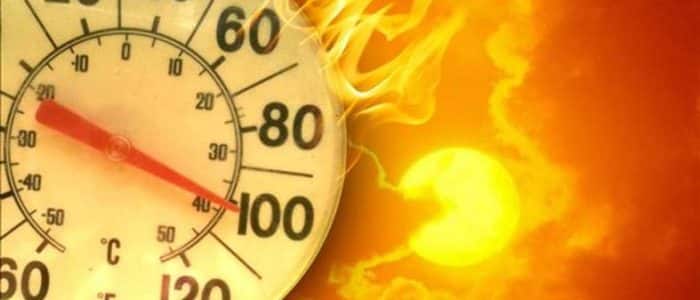Hot and Humid Can Feel Worse than Death Valley Heat Record
Death Valley holds the record as the hottest place on Earth, but it’s a dry heat. In June the National Park received lots of attention with tourists flocking to experience record temperatures of 129 degrees, but daytime relative humidity was only 6%. On July 10th, 1913 the weather observer at Greenland Ranch in Death Valley, California recorded a high temperature of 134°F (56.7°C). According to the National Park Service, this is the highest reliably recorded air temperature on Earth.
Most of the US is not a desert. In Alabama, we know high humidity makes the heat feel worse. Scientists have calculated the added effect of high humidity and developed a chart that accounts for both temperature and humidity called the Heat Index. According to the Heat Index, 129 degrees at 6% humidity feels like… 129 degrees, while 99 degrees at 63% humidity feels like… 129 degrees!
The highest Heat Index ever recorded in the US was an astonishing 148 degrees in Appleton, Wisconsin on July 15, 1995 according to weatherunderground.com, when air temperature was 101 degrees with relative humidity at 71%. The summer heat wave of 1995 contributed to the deaths of 750 in the Chicago region.
Last summer’s heat wave hit a record 106 degrees on June 29 in Huntsville, but low humidity kept the Heat Index below 110. August 4, 2010, the Huntsville weather station recorded 102 degrees with 43% humidity, a heat index of 117 degrees – just two degrees less than Heat Index Las Vegas had this month with a new record temperature of 117 degrees with 16% humidity.

Heat Index Chart
Human comfort and safety in hot weather depends on the body regulating internal temperatures through perspiration, the same principal used by swamp coolers. When water evaporates off your body it has a cooling effect. The drier the climate, the better evaporative cooling works and many homes in the desert southwest use evaporative cooling systems.
Homes in Alabama need air conditioning to lower the air temperature and humidity. Home performance experts working with the AlabamaWISE program say indoor humidity levels should be maintained between 40% and 60%. The best way to control the climate indoors is to make sure your home is well insulated and air sealed. Unconditioned outside air leaking into the home carries lots of moisture and heat. Conditioned air leaking out of the home wastes money. They typical home loses all of its conditioned air every hour or two — even faster if it’s windy outside.
A properly installed air conditioning system reduces indoor humidity as it cools the air. You will see how much moisture your air conditioner is removing by checking the condensate dripping out of the unit. By the way, if your air handler is located in the attic, you should check to make sure the condensation is draining properly. Water damage to ceilings and drywall is common due to plugged condensate drains on central air conditioning units.
The AlabamaWISE program is a program of Nexus Energy Center in partnership with ADECA and Southeast Energy Efficiency Alliance to help north Alabama families find contractors who specialize in energy saving insulation and air sealing improvements. Low interest loans and certified contractors are available to analyze and fix home performance problems. Just click on the Improve button at left to get started.


Comments are closed.